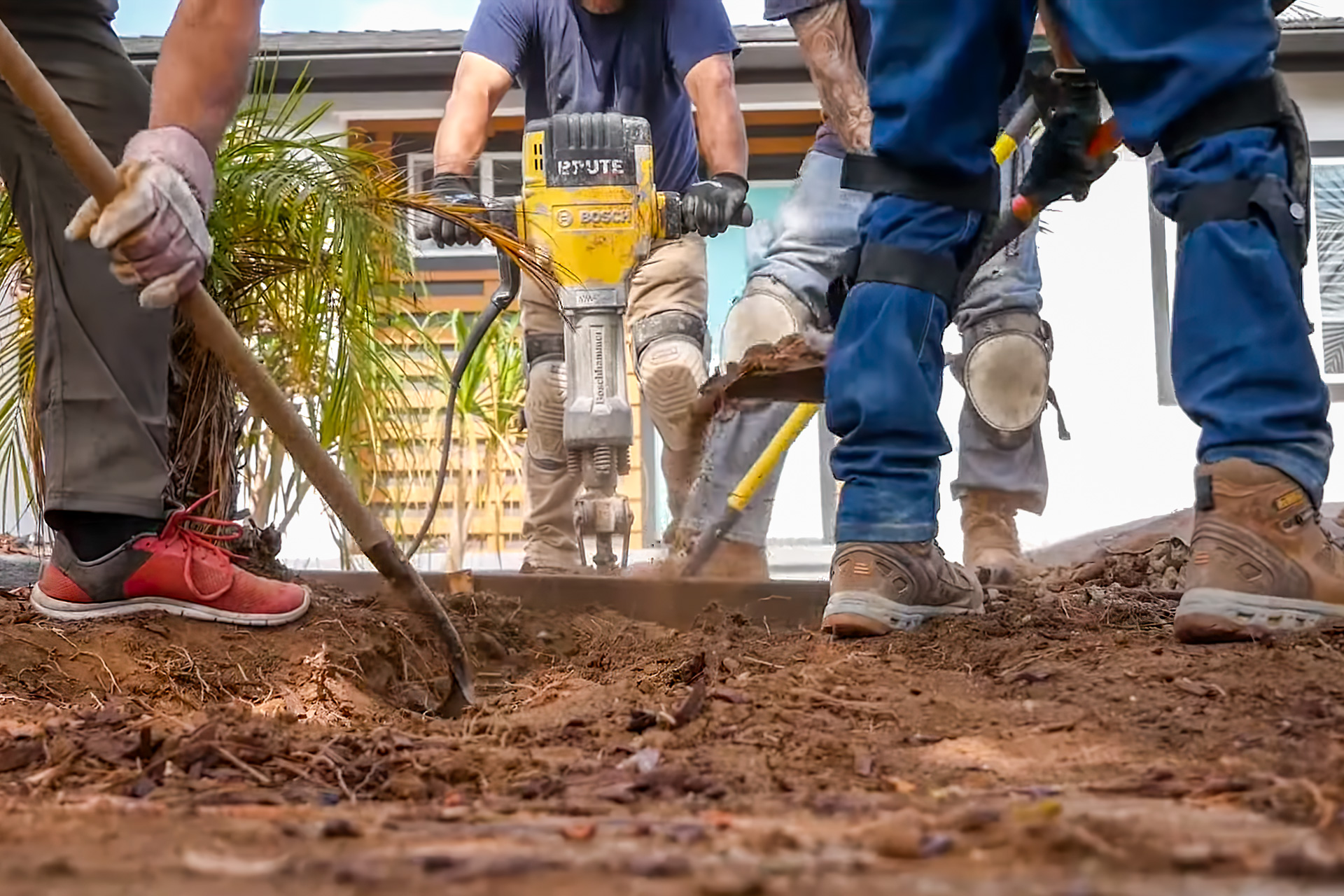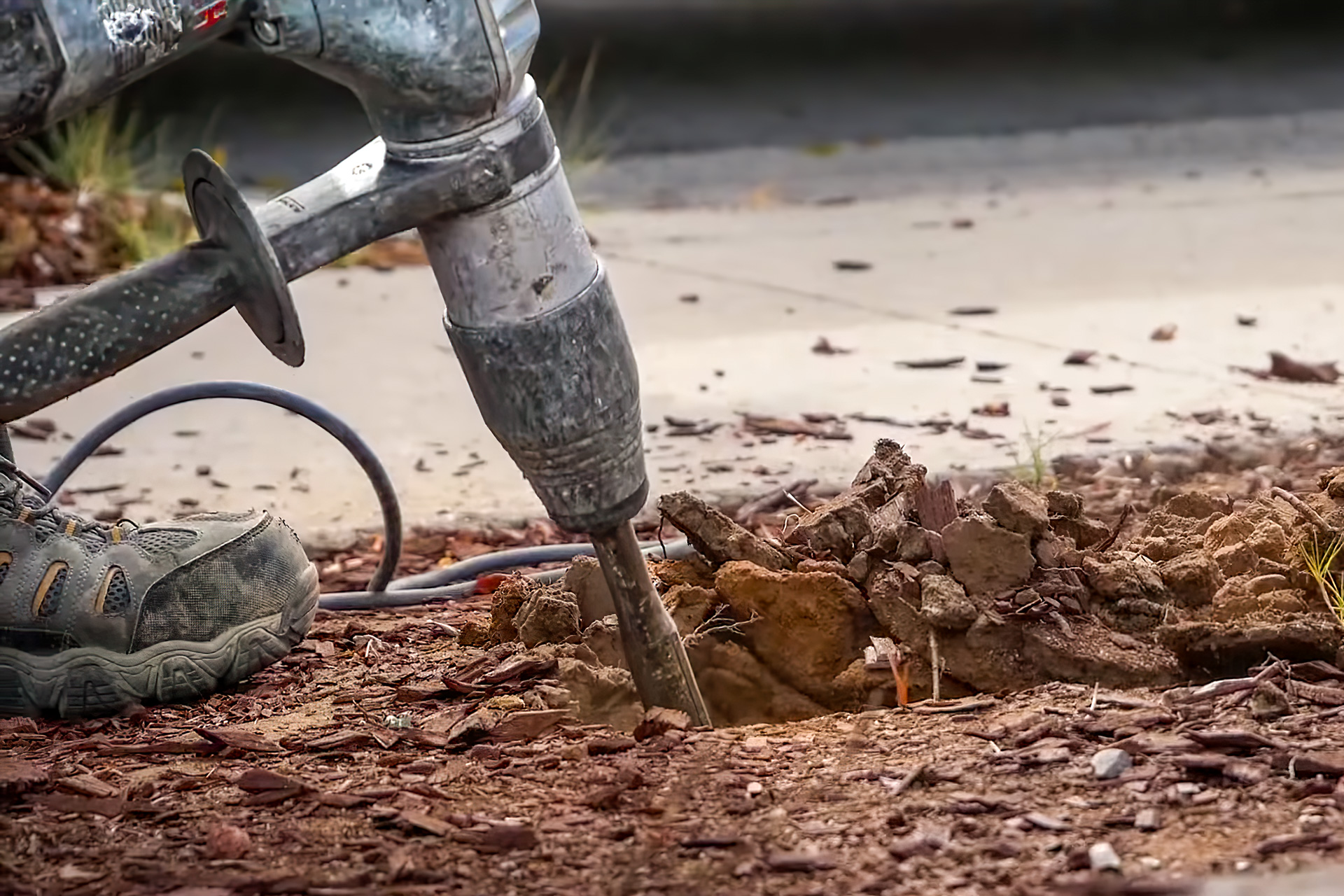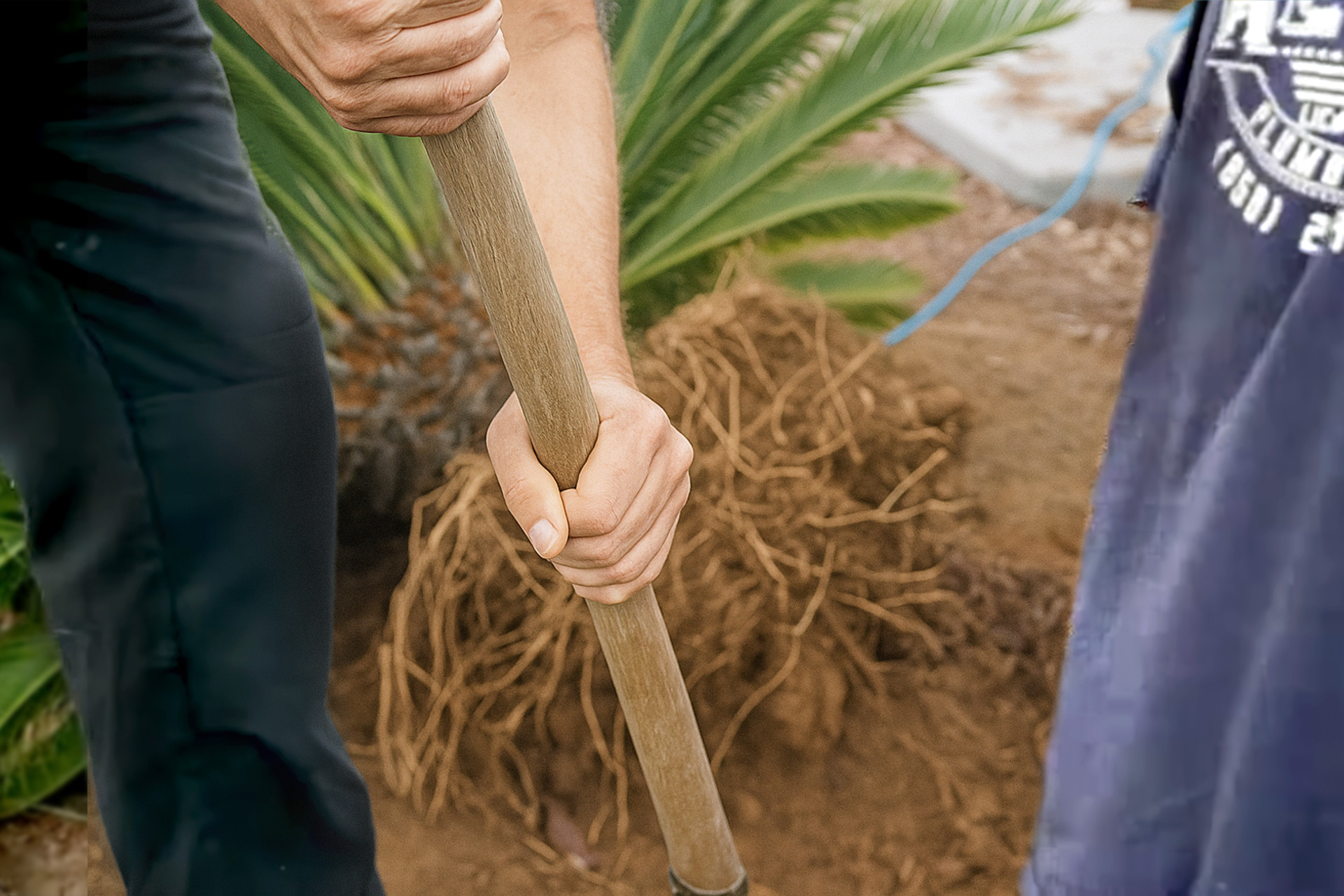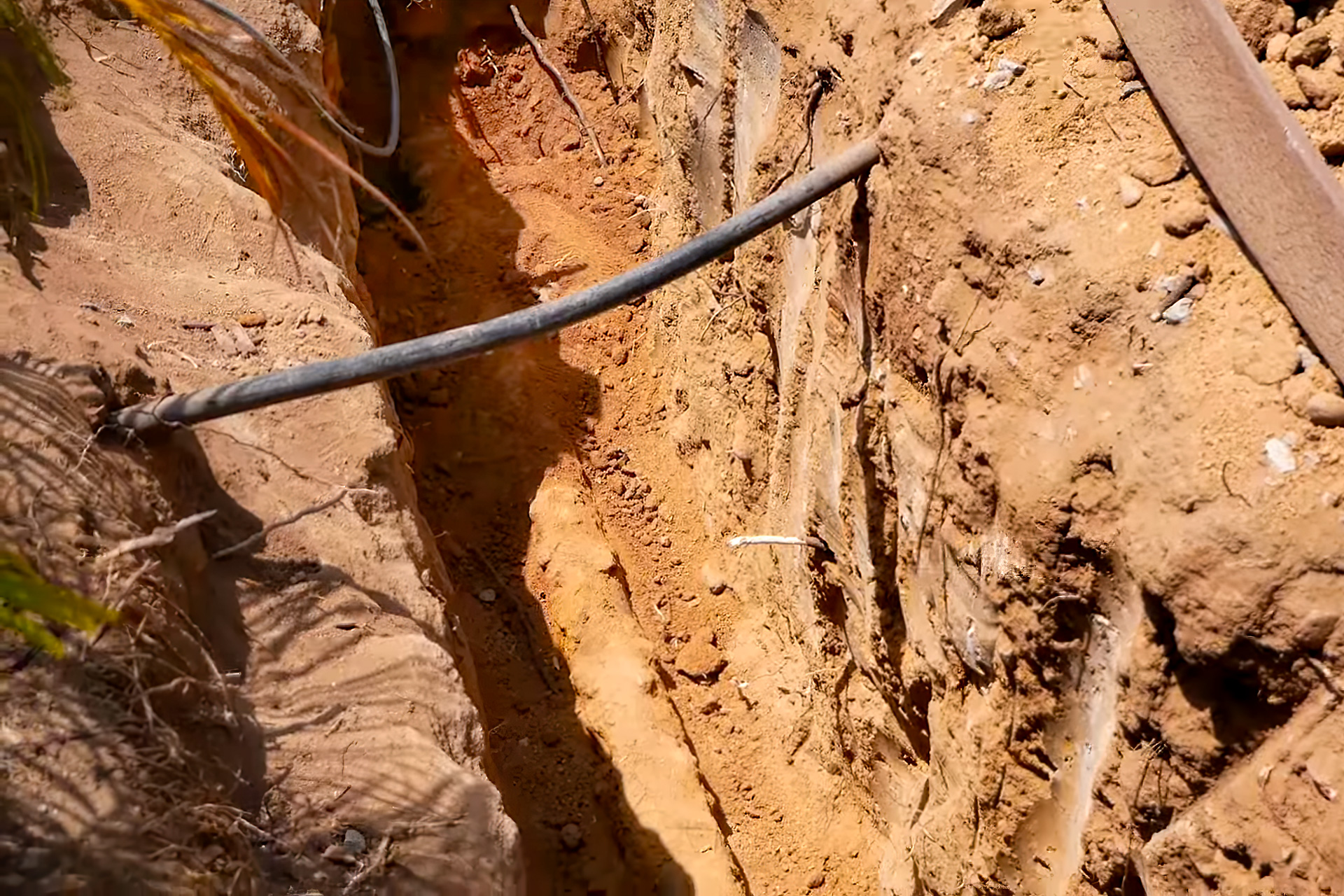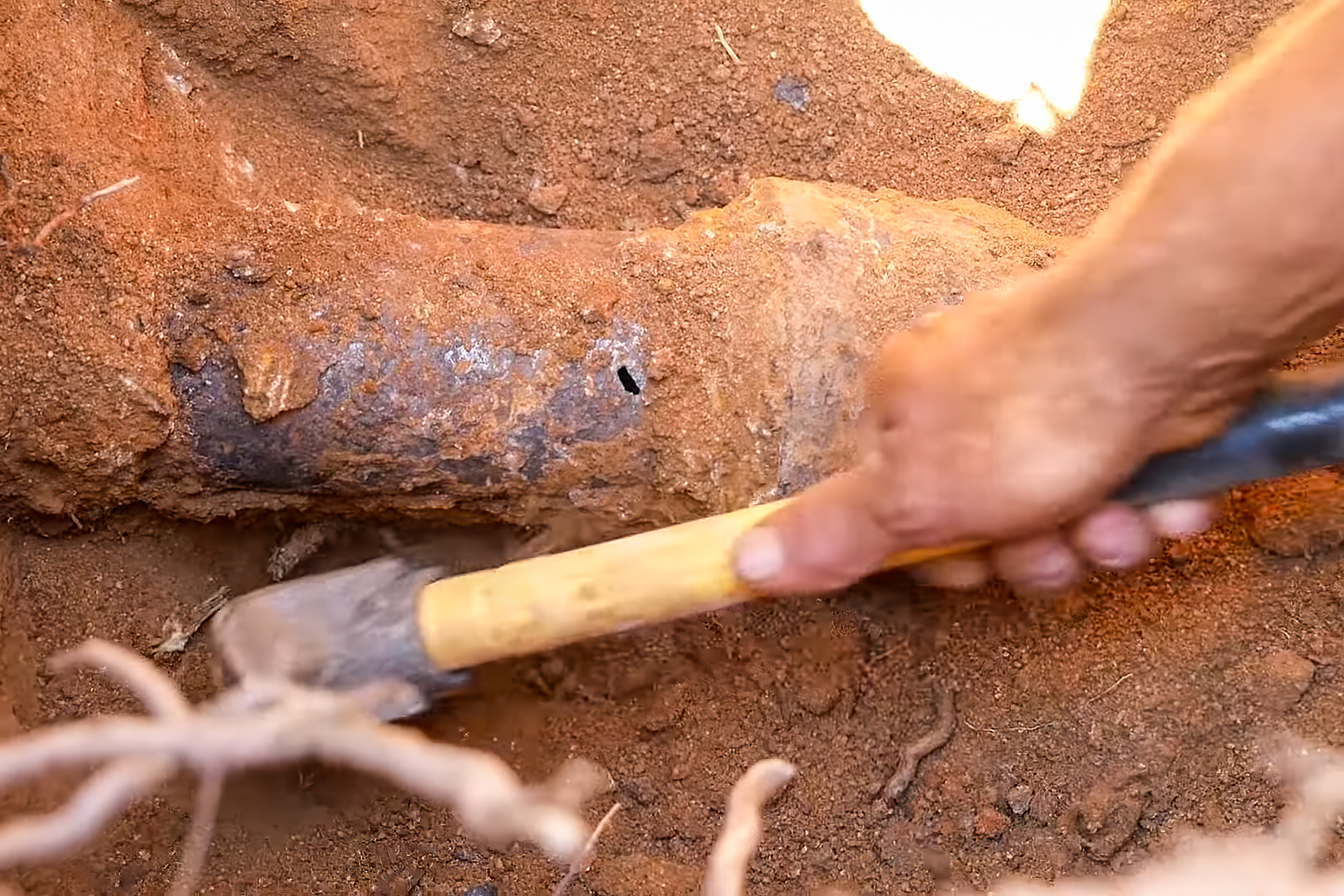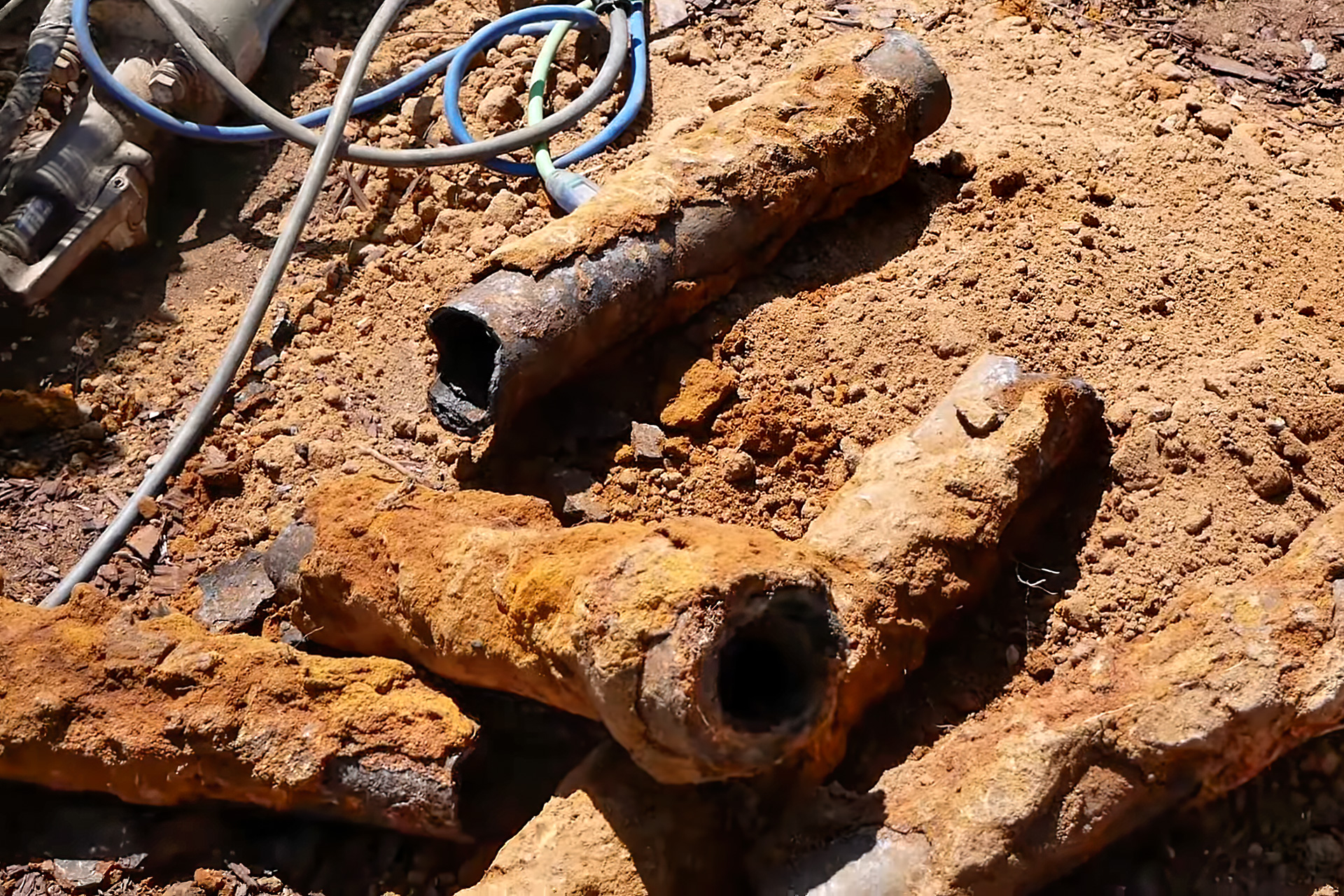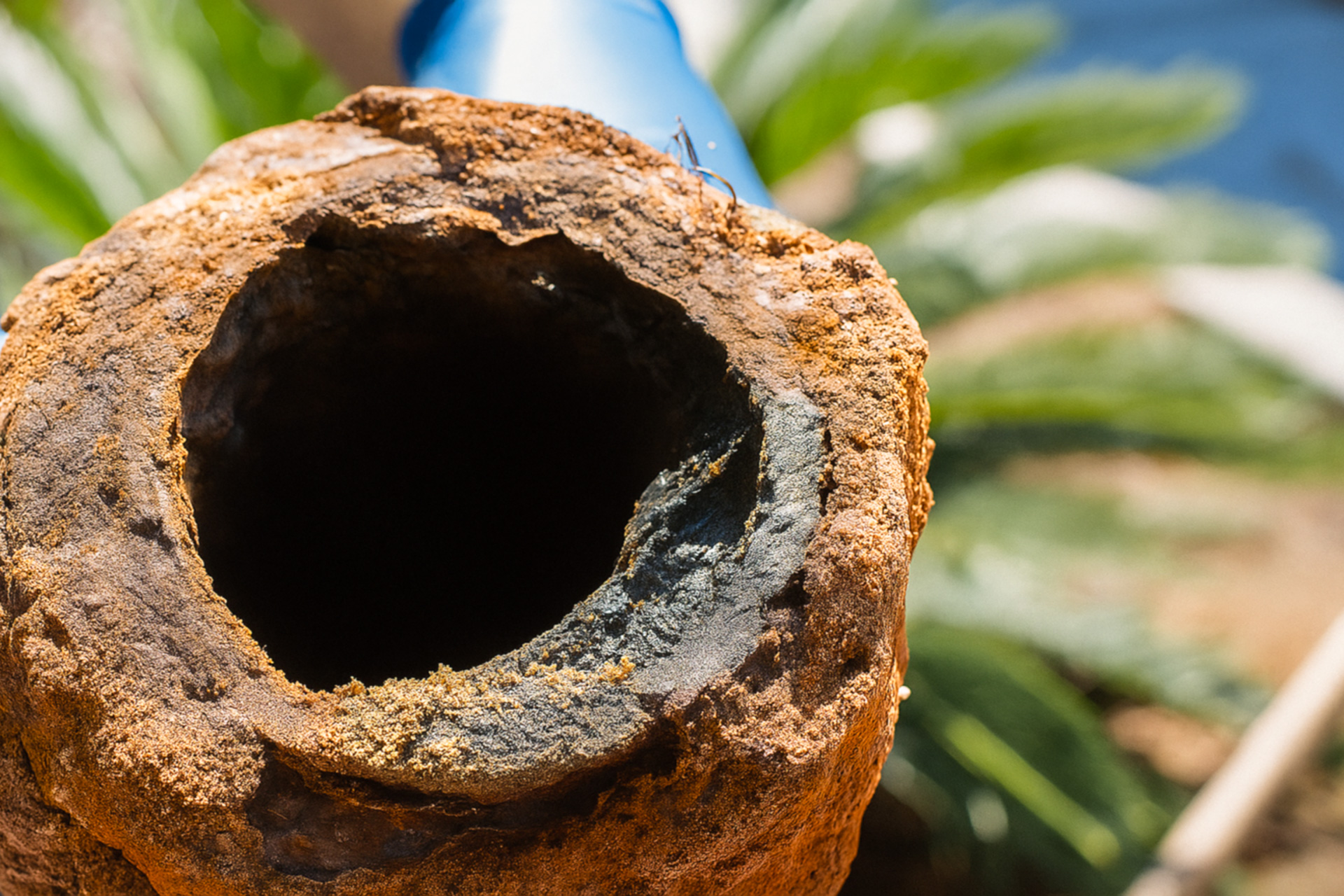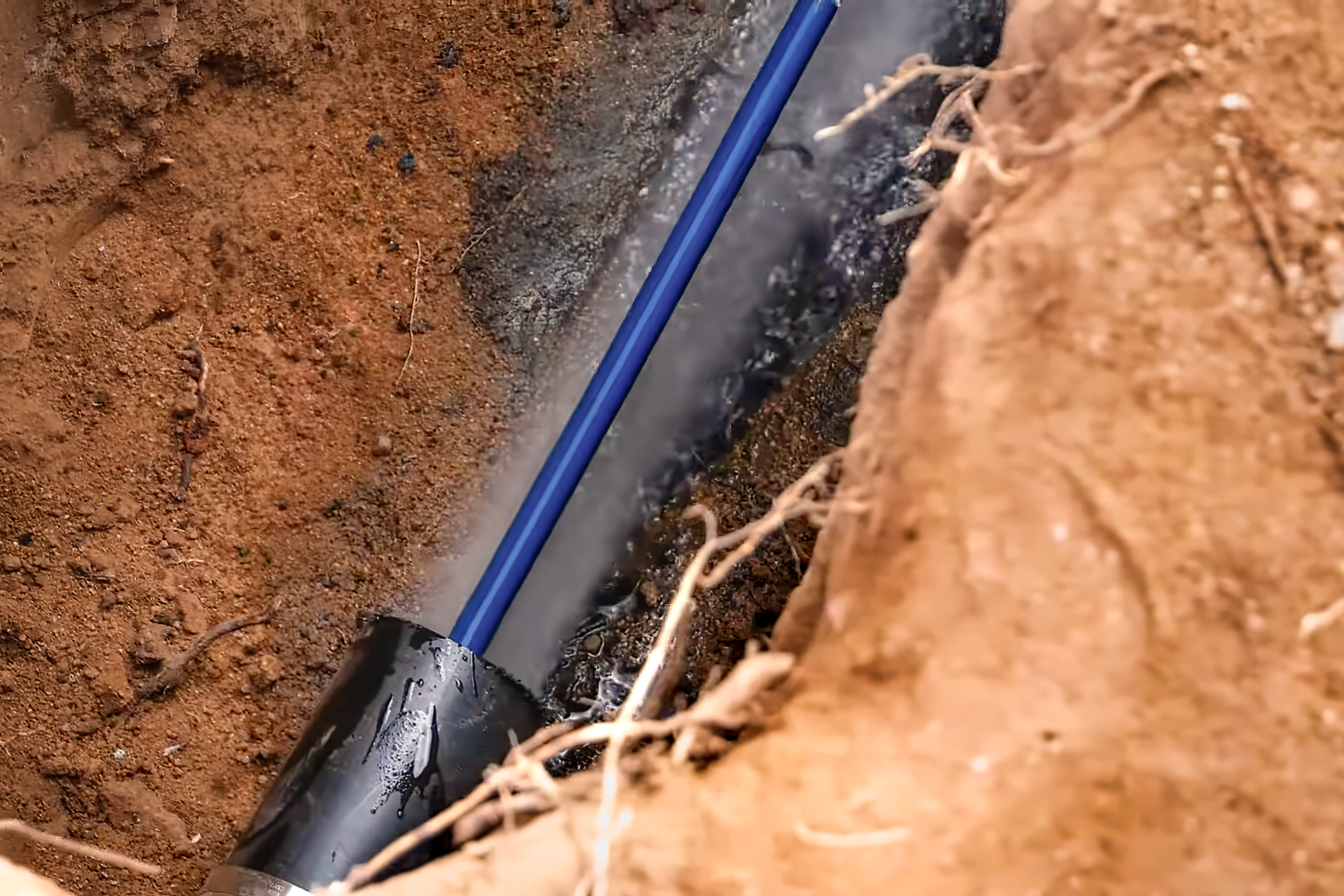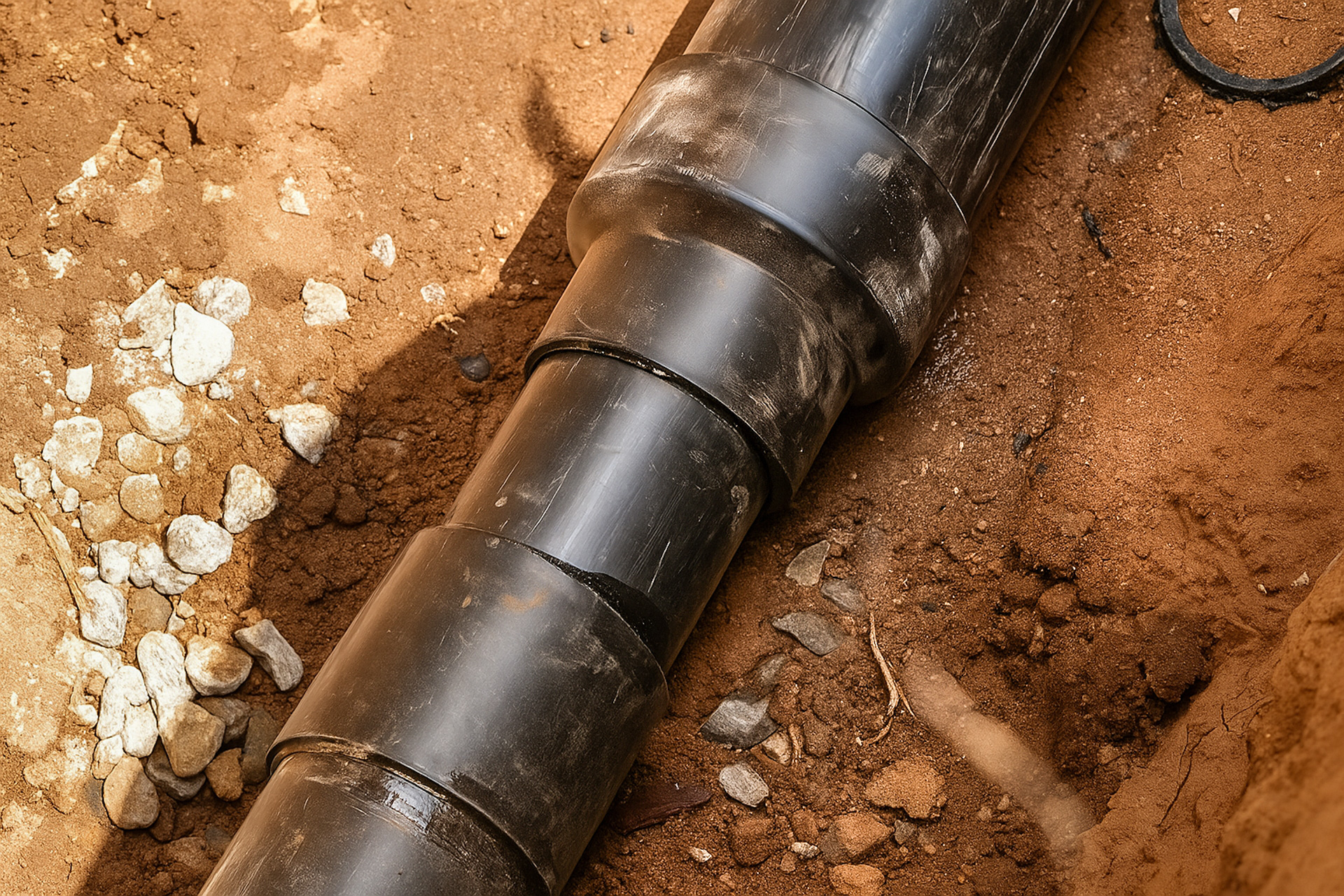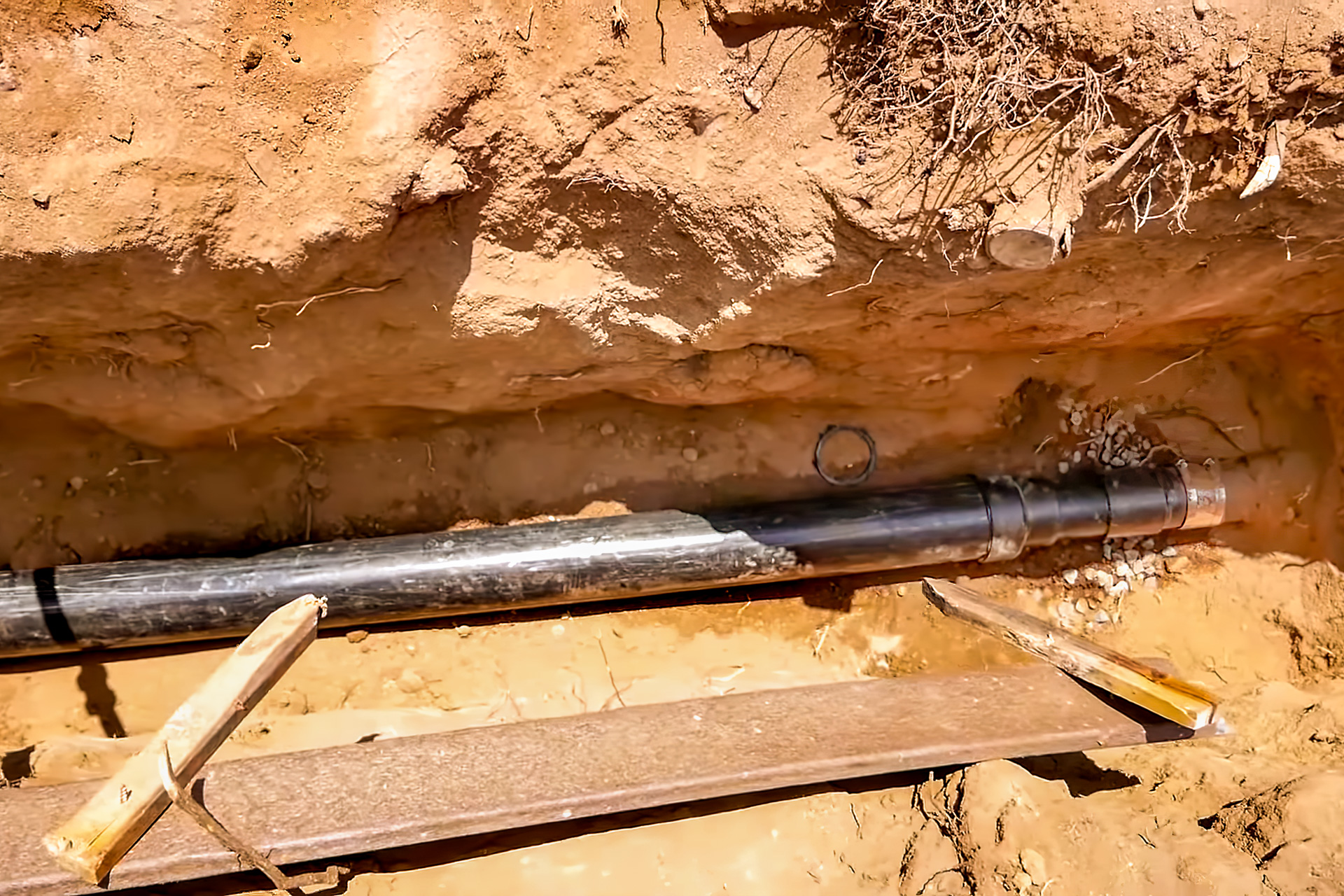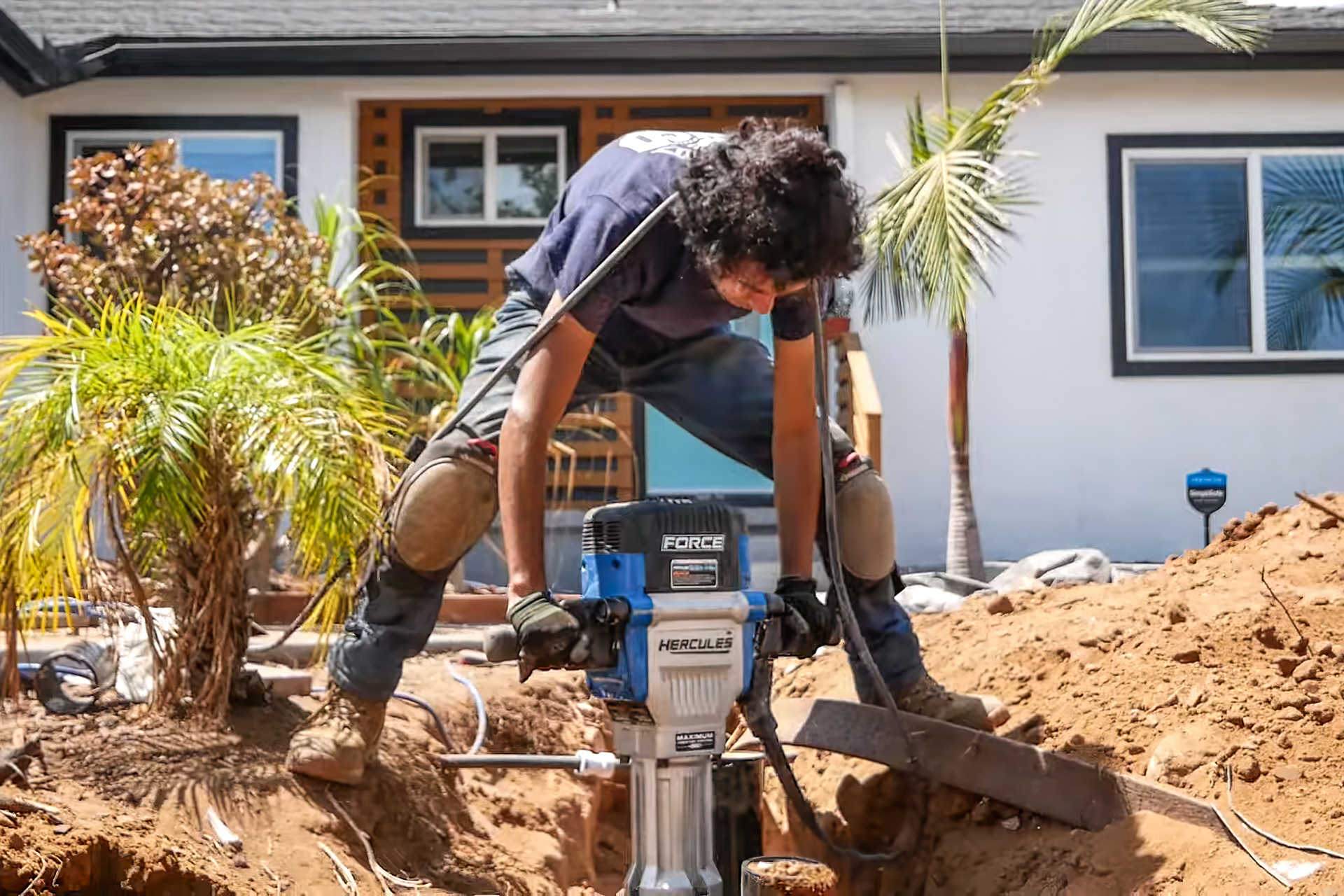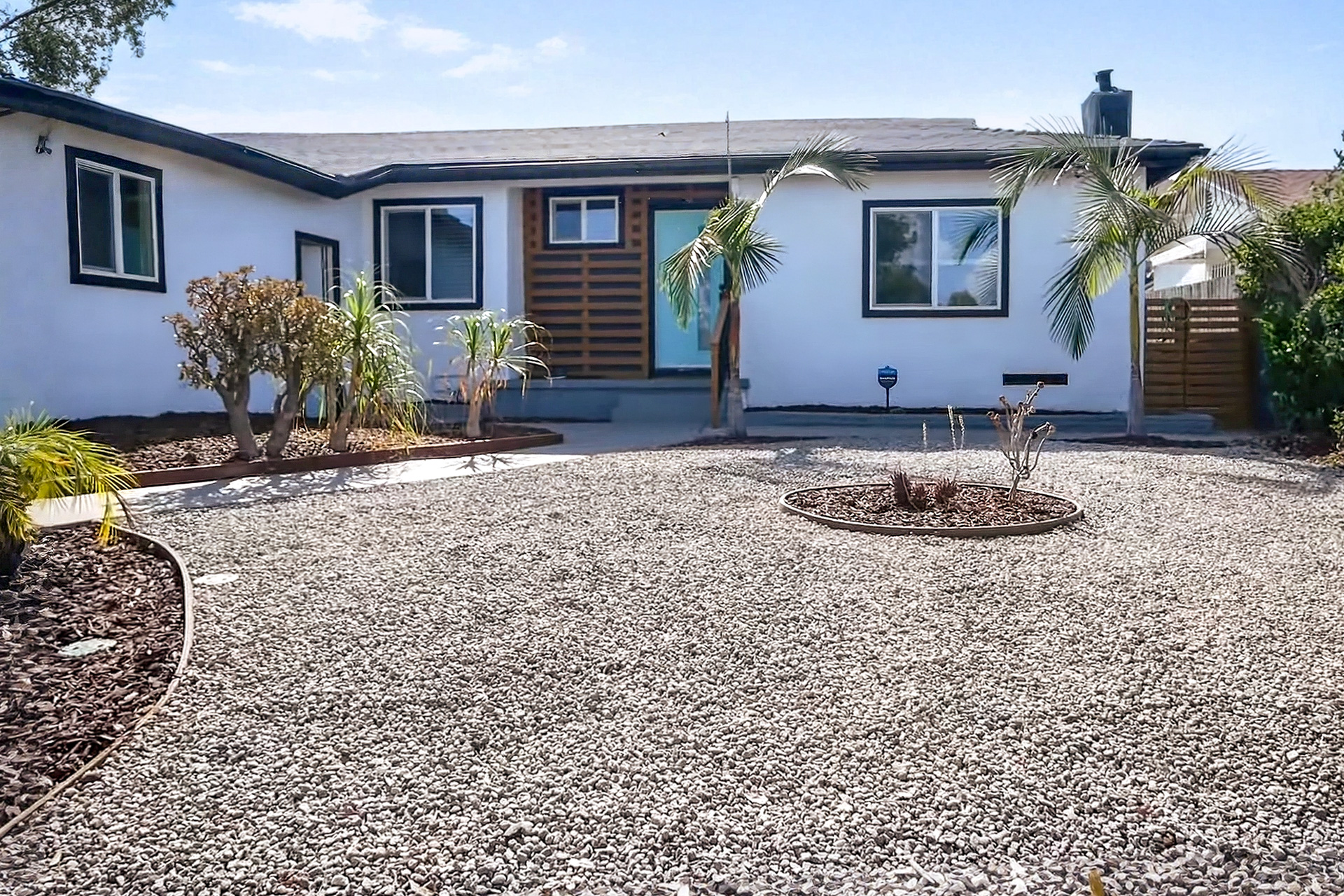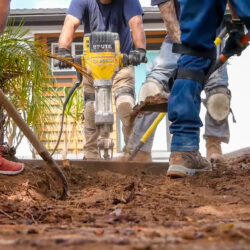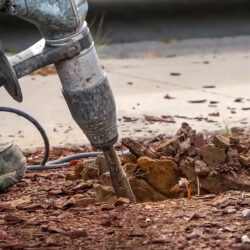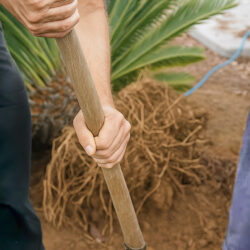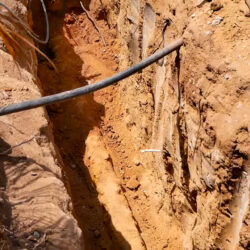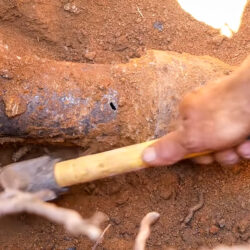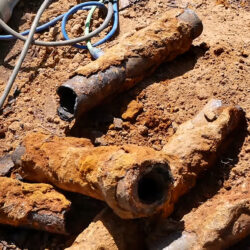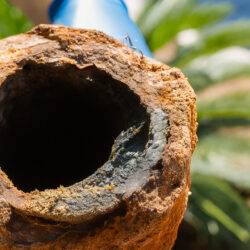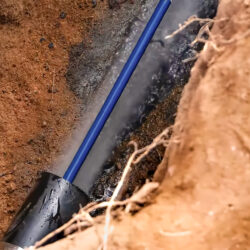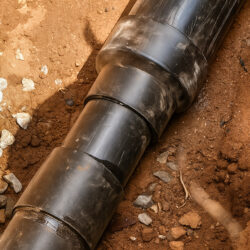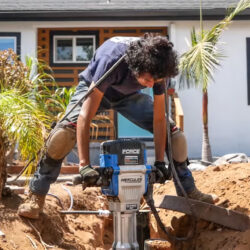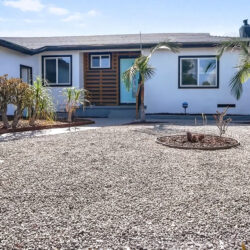How the Almco Team Restored a Failing Cast Iron Sewer Line in Just Two Days—Without Damaging the Yard
A constantly clogged sewer line in a private home is often a warning sign of deeper issues within the plumbing system. Most commonly, it means the cast iron pipes have corroded and begun to deteriorate, preventing wastewater from flowing into the municipal system and causing buildup along the inner pipe walls. In more serious cases, small cracks allow tree roots to infiltrate the line in search of moisture, sometimes completely blocking the flow of sewage.
This case study explains how the Almco team tackled just such a problem at a private residence in San Diego using a trenchless pipe rehabilitation method known as CIPP Inversion.
Contents
Technologies & Services
Customer’s Main Concern & Hidden Challenges Behind the Project
A homeowner reached out to Almco Plumbing due to poor drainage and frequent blockages in the home’s sewer system.
Blueprints revealed that the main sewer line ran from the house to the municipal system directly beneath a lawn, where a palm tree was planted right above the pipe. Due to the severity of the blockage, Almco technicians were unable to conduct a video inspection but suspected that the tree’s root system had infiltrated the aging cast iron pipe through microcracks, likely causing the recurring clogs.
To save the tree, the team decided to transplant the palm a few feet away from the sewer line. After that, they manually dug a trench approximately four feet deep to access the pipe. Since blueprints also showed a water line running nearby, all excavation was done by hand to avoid damaging other utilities.
Upon visual inspection, the pipe was found to be heavily corroded, with sections so badly deteriorated they had visible holes. After removal, the pipes confirmed the team’s hypothesis: years of corrosion had led to microcracks, which allowed the palm roots to invade the pipe, feeding off the wastewater. Over time, the root growth formed blockages so dense that wastewater could no longer pass through to the city sewer system.
Almco’s Trenchless Repair Solution Using CIPP Inversion
The cast iron pipe was in such poor condition that it crumbled with minimal pressure. For any restoration method to work, the pipe’s interior would first need to be cleaned of organic buildup and mineral deposits. In this case, that wasn’t feasible—the cleaning process alone risked completely collapsing the pipe.
As a result, a portion of the main sewer line was fully removed and replaced with a new, high-strength PVC pipe.
However, parts of the pipeline that were still structurally sound were eligible for trenchless restoration using CIPP technology. This approach allowed the team to avoid tearing up large sections of the property or removing parts of the home’s foundation—ultimately saving the customer considerable time and money.
Step-by-Step Sewer Line Rehabilitation with CIPP
For this project, the Almco team used CIPP (Cured-in-Place Pipe) inversion, installing epoxy liners in two separate sections of the pipe:
- The first liner was installed beneath the home, allowing the foundation to remain untouched
- The second liner was placed in the pipeline connecting the property to the municipal sewer system
Key stages of the CIPP process.
1. Pipe Cleaning & Preparation
Before liner installation, the pipes were cleared of blockages using high-pressure hydro-jetting—delivering water at 4,000 PSI and 17 gallons per minute. Specially calibrated nozzles distributed the water evenly to dislodge even the most stubborn debris.
Next, carbide chain cutters were used to remove corroded, uneven sections of the pipe, followed by an abrasive nozzle to polish the internal surface, making it smooth and uniform.
Residual dust and debris were flushed out with clean water, and a video inspection was conducted to verify that the pipe was ready for liner installation.
2. Installing the Epoxy Liner
CIPP inversion involves inserting a flexible felt liner saturated with epoxy resin into the damaged pipe. The liner’s size is carefully selected based on the inner diameter of the host pipe.
The epoxy resin—a two-part, high-strength formulation—is thoroughly mixed and poured into the felt liner, ensuring full saturation during the wet-out process.
The soaked liner is then loaded into an installation unit and attached to the pipe’s entry point using a special boot. With compressed air, the liner is inverted (turned inside out) as it is pushed into the pipe. As it unrolls, the epoxy-coated surface adheres tightly to the pipe’s interior, filling microcracks and sealing imperfections.
Once in place, the liner is expanded with an inflatable bladder to press it firmly against the pipe walls. The liner is left to cure in place for 1 to 3 hours. Once cured, the bladder is removed, leaving a smooth, solid epoxy “pipe within a pipe”.
The newly lined pipe can be safely used within 24 hours.
Why CIPP Inversion Was the Right Fit for This Project
With this method, Almco successfully rehabilitated two sections of the failing sewer line. The severely damaged stretch was replaced with new ABS pipe and dual cleanouts to simplify future maintenance. All PVC joints were sealed using high-grade polyester adhesive to prevent leaks and groundwater contamination.
After the liner cured, a final CCTV inspection confirmed the integrity of the installation. The work area was restored, drain caps were fitted on the service cleanouts, and the lawn was returned to its original condition.
The entire project was completed in just two working days. Thanks to CIPP technology, there was no need to tear up the home’s foundation or flooring, saving the client both time and money.
This project demonstrated Almco’s ability to solve complex sewer issues while preserving the property’s structural integrity and minimizing landscape disruption. CIPP inversion offered a clean, cost-effective, and technologically advanced solution for long-term pipe rehabilitation.
